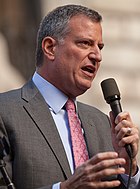Lorcania: Difference between revisions
No edit summary |
|||
| Line 9: | Line 9: | ||
|alt_flag2 = <!--alt text for second flag--> | |alt_flag2 = <!--alt text for second flag--> | ||
|flag2_border = <!--set to no to disable border around the flag--> | |flag2_border = <!--set to no to disable border around the flag--> | ||
|image_coat = | |image_coat = Seal of Lorcania.png | ||
|alt_coat = <!--alt text for coat of arms--> | |alt_coat = <!--alt text for coat of arms--> | ||
|symbol_type = | |symbol_type = Seal | ||
|symbol_footnote = <!--optional reference or footnote for the symbol caption--> | |symbol_footnote = <!--optional reference or footnote for the symbol caption--> | ||
|national_motto = | |national_motto = ''"Unitatem et Liberum"'' <br><small>"In Unity and Freedom"</small> | ||
|englishmotto = <!--English language version of motto--> | |englishmotto = <!--English language version of motto--> | ||
|national_anthem = | |national_anthem = [[Glory to the Union]]<br>[[File:MediaPlayer.png|link=https://www.youtube.com/watch?v=Q-vi1YKcHDI|200px]] | ||
|royal_anthem = <!--in inverted commas and wikilinked if link exists--> | |royal_anthem = <!--in inverted commas and wikilinked if link exists--> | ||
|other_symbol_type = <!--Use if a further symbol exists, e.g. hymn--> | |other_symbol_type = <!--Use if a further symbol exists, e.g. hymn--> | ||
Revision as of 11:16, 8 July 2019
Union of Lorcania Aontas na Lorcáinann | |
|---|---|
Motto: "Unitatem et Liberum" "In Unity and Freedom" | |
| Capital | Calderdon |
| Largest | Na Naoimh |
| Official languages | |
| Recognised regional languages | |
| Demonym(s) | Lorcanian |
| Government | Federal presidential constitutional republic |
| Cormac Ó Néill | |
| Liam Richmond | |
| Samhaoir Nic Thóm | |
| Legislature | Parliament |
| House of Notables | |
| House of Commons | |
| Independence from the Gaullican Empire | |
• Declaration | 11 August 1766 |
• Federation | 22 December 1771 |
• Constitution | 6 January 1778 |
• Amendment | 17 July 1802 |
• Great Reforms | 30 June 1927 |
| Population | |
• 2019 estimate | 48,129,000 |
• 2016 census | 46,571,281 |
| GDP (PPP) | 2016 estimate |
• Total | $2.115 trillion |
• Per capita | $45,408 |
| GDP (nominal) | 2016 estimate |
• Total | $1.876 trillion |
• Per capita | $40,293 |
| Currency | Shilling (SSH) |
| Date format | mm.dd.yyyy, CE |
| Driving side | right |
| Internet TLD | .uol |
Lorcania (Ghaillish: Lorcáinann), officially the Union of Lorcania (Ghaillish: Aontas na Lorcáinann), is a federation of twelve commonwealths in northwestern Asteria Superior, centred in the federal capital of Calderdon. The union is home to 46.5 million people, and Lorcania is considered a regional power on the continent. Na Naoimh is the largest city in the country.
Prior to contact with Euclea, the region was inhabited primarily by the Hauronian and Rakensian peoples. After Hashim ibn Ashtra opened the country up to colonisation in 1488, the kingdoms of Glytter and Estmere became the primary colonial powers in the region. Their colonies in the area would grow considerably in the following years, although in the aftermath of the Gilded Wars the entire region would be come under Gaullican control alongside the rest of the western seaboard. The local Amendist populations clashed with the new Catholic ascendancy, which helped to fuel anti-Gaullican and colonial nationalist sentiments, eventually culminating in the Kindalk Massacre in 1764 and Lorcanian involvement in the War for Independence. Following the victory of the United Colonies during the war, dreams of a pan-Asterian federation were dashed, and the northern and southern colonies went their separate ways.
The eight commonwealths of Lorcania entered into federation in 1771, ratifying a constitution by the next year. Four additional states would be admitted to the union throughout post-independence history. From the 1800s onward, the Union would engage in the Eastward Drive, in which it attempted to expand through the interior of the Asterian continent in order to obtain an eastern port. These ambitions would culminate in the Interior Wars with the other Asterian powers, and ultimately the Union would be unsuccessful in gaining a foothold in the east. Following increasing societal pressures and a powerful single-tax movement, Lorcania would experience societal upheaval throughout the 1910s, culminating in the Great Reforms of 1927, which would extend voting privileges to all and introduce a land tax across the Union. During the Great War, Lorcania engaged in armed neutrality, before eventually joining the Grand Alliance. In the post-war era, the Union engaged in a brief stand-off with syndicalist Chervolesia, before embracing a broader foreign policy.
Today, Lorcania is a federal presidential constitutional republic, operating a mixed economy with a GDP (PPP) per capita of $45,408. Lorcania is unique in that it maintains a land tax across all sectors. The current President is Cormac Ó Néill, while the current Vice-President is Liam Richmond. The union is a member of the Community of Nations, ICD, ITO and GIFA.
Etymology
History
Prior to Euclean contact
Colonial period
Independence and federation
Eastward Drive
Upheaval and the Great Reforms
Great War
Post-war era
Geography
Environment
Flora and fauna
Politics

|

|
| Cormac Ó Néill President since 2015 |
Liam Richmond Vice-President since 2015 |
Government
Administrative divisions
Lorcania is a federation, comprised of twelve constituent commonwealths. These commonwealths are also grouped together into three cultural heritage regions, based on the linguistic character of the commonwealths. There is the Ghaillophone Sheah (Ghaillish: Sídhe), the Estmerophone New Estmere (Ghaillish: Astaena Nua) and the allophone Eastern Territory (Ghaillish: Críoch an Oirthir).

